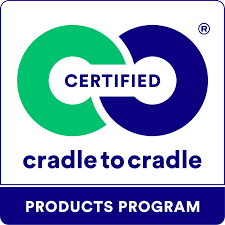The Cradle to Cradle Certified® (C2C) approach aims to promote circular business models and empower consumers to take action to protect the planet and the climate. This approach is based on two complementary cycles: the biological cycle and the technical cycle. In this article, we will learn all the differences between the biological and technical cycles and especially, why they are essential in the fight against global warming
TheC2C life cycle
The biological cycle concerns products made from biodegradable materials, without harmful additives, able to decompose naturally and return to the biosphere
The products concerned by the biological cycle
Product categories that fall under this typology include:
- Food products: fruits, vegetables, grains, etc.
- Natural textiles: organic cotton, linen, hemp, etc.
- Paper products: toilet paper, paper towels, cardboard, packaging, etc.
- Hygiene and beauty products: soaps, shampoos, etc.
Key life cycle stages:
- Manufacturing: Biodegradable materials are manufactured in compliance with environmental standards and using the right amount of natural resources.
- Use: Products created from biodegradable materials have a lifespan at least equivalent to the renewal time of the resource.
- Back to top : End-of-life products are collected for industrial biodegradation if they were not designed for home composting.
- Composting and degradation into biological nutrients: Biodegradable materials are decomposed, transformed and reused to feed the biosphere and promote the growth of new plants.
An example of a biological life cycle:
Recycled paper is made from cellulose fibers from various sources, such as magazines, advertisements, etc. After all additives such as inks have been washed out, for example, the manufacturing process involves the transformation of the raw material into pulp and then the formation of the paper sheet. Once used, paper can be recycled up to 7 times to create new paper products, thus completing its biological life cycle. In its final life, the paper, leached of these additives, can return to the earth. If printed papers used inks that were healthy and environmentally friendly, the process would be less harmful to the environment and less expensive. Chemical inks represent up to 60% of the weight of the recovered pulp.
C2C Technical Cycle
The technical cycle concerns all other products that cannot be returned to the earth to regenerate natural resources.
The products concerned by the technical cycle:
Product categories that fall under this typology include:
- Electronics: smartphones, computers, televisions, etc.
- Building products: concrete, non-biodegradable flexible floors, plasterboard, frames, etc.
- Vehicles: cars, bikes, scooters, etc.
- Non-biodegradable packaging: plastics, metals, etc.
Key stages of the technical cycle:
- Manufacturing: Non-biodegradable materials, such as metals and plastics, are produced in compliance with environmental standards and with minimal impact on resources.
- Use: Consumers use non-biodegradable products, and take care of them to extend their life.
- Back to top : End-of-life products are collected for reintroduction into manufacturing cycles.
- Dismantling/technical: Non-biodegradable materials are sorted, reused, disassembled, for the manufacture of new products.
An example of a technical life cycle:
The sustainable smartphone is an example of a product that is subject to the technical cycle.
It is made from non-biodegradable materials, such as metals and plastics, produced in compliance with environmental standards. The design of the smartphone aims at durability, repairability and modularity to extend its lifespan. At the end of its life, the smartphone is dismantled and its components are sorted and reused or recycled for the manufacture of new products, thus completing its technical cycle.
By understanding and applying the steps of the biological and technical cycles, the C2C approach creates a sustainable circular economy that preserves resources and protects our planet. These products can be certified as Cradle to Cradle Certified® to recognize their environmental quality.
